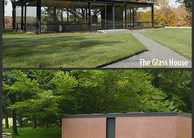Opinion:A Preservationist's Perspective on Levittown Communities: Urban Planning and Design's Awkward Dilemma
By
2012, Vol. 4 No. 01 | pg. 2/2 | « The overall goals of historic preservation are to “save America’s diverse historic places and revitalize our communities.” A core aim of preservationists is to preserve and promote buildings that play a significant role in the historical context of the time in which they were built. This includes buildings that, inter alia, contributed to or illustrate the “peopling” of places and “developing the American economy.” More specifically, [the concept of peopling places] examines human population movement and change. It deals with demographic shifts in American society . . . migration from outside and within; community and neighborhood . . . [“Developing the American economy” examines how] economic growth and development are a major part of the history of the United States, reflected in the way Americans have worked and sustained themselves.5 The goals of historic preservation fit neatly into the overarching goals of smart growth. Smart growth, when appropriately applied, should “create walkable neighborhoods, strengthen and direct development towards existing communities, and provide a variety of transportation choices.” 6 Historic properties tend to be near traditional city centers, and when occupied, tend to be occupied by residents near or below the poverty line. For those reasons, maximizing the potential usage of those buildings contributes directly to creation of walkable neighborhoods and strengthening communities. Locating housing near a city center also makes it much easier for municipalities to offer a variety of transportation choices. Historic preservation is therefore an integral part of smart growth policy.In addition to examining the historical and cultural significance of buildings and sites, the preservation community generally applies the National Register of Historic Places’ requirement that a property be at least fifty years old in order to qualify for any protective or favorable status. The treatment of mid-twentieth century suburban houses is a growing issue in urban planning. For the first time on such a large scale, the main principles of smart growth are at odds with the main principles of historic preservation. The criteria that makes neighborhoods and buildings “historic” and worthy of preservation applies (literally) to Levittown style neighborhoods, but their location, architecture, and single-use design do not sit well with smart growth planners. Suburban housing and its inherent distance from city centers draws the ire of city and regional planners. Generally speaking, the best way to curtail suburban sprawl would be to discontinue building on the periphery. Until discontinuation is feasible, preservationists must decide what to do with the growing number of houses reaching the age limit for protected status and tax breaks.7 It is doubtful that the preservation community had suburban commuter neighborhoods in mind when it pushed through the legislation and regulations that now make those neighborhoods technically historic. Preservation efforts rely heavily on passionate people who work long hours to save historic structures from all manners of threats to their use and existence. Those same people may not mobilize to save houses they view as architecturally unimaginative, structurally inferior, and historically insignificant when compared to Victorian manses or gothic revival cathedrals. In effect, the preservation community set a trap for itself by implementing policies to protect certain types of buildings without thinking of other types that could one day qualify. A careful eye towards new construction could have somewhat offset this impending dilemma, but instead preservationists are faced with the possibility of being openly hypocritical. Smart growth advocates face the same possibility. If the latter group chooses not to help preserve aging suburban neighborhoods, they will have to draw a line as to what type of historic preservation does and not facilitate smart growth. The consequences of ignoring the aging Levittown style developments could economically invert the concentric circles of urban development. With smart growth policy slowly pushing the wealthy and upper middle class towards revitalized city centers, the old subdivisions will be abandoned. The downtown loft movement, made possible by restoration and urban infill, could trigger a second and directionally opposite migration. If suburban homeowners move to the interior of metropolitan areas, they will leave vacant homes behind. As with any migration triggered by financial means and social status, their former homes will plummet in value. The exact same phenomenon8 took place in the mid-twentieth century, and it is why historic housing today tends to be occupied by the poor. The last time this happened, it took the preservation community decades to effectively organize and quell the inequalities of dilapidated historic dwellings. They should not wait so long this time. Levittown-inspired developments are not perfect from a design perspective, but they are historic. They should be preserved because they represent a significant and unique time in American history and they represent incredible amounts of building materials and labor. Local governments should make their isolated, car-dependant communities more sustainable, then preservationists should work with local governments to maintain and protect those communities. Preservationists vow to protect any part of the built environment that chronicles important events in the “peopling” of places. Since the Native Americans moved south from the Berring Strait, America had not seen a migration like the one during the twentieth century. People simultaneously moved from city centers to suburbs and from rural areas to urban areas. Most of them lived in Levittown-inspired subdivisions. Those subdivisions then, stand as a multi-million-piece monument to the “peopling” of places. Also, the remote location of those places made the American economy completely car dependant. Too many millions of people to physically fit in existing central business district housing lived in suburbs and commuted to town each day. This functional revolution in the economy comprises another type of event that preservationists seek to chronicle through the built environment—“develop[ment] of the American economy.” Like all buildings, suburban single-family dwellings contain “embodied energy.” The materials and labor used to build and maintain structures is mostly wasted when they are demolished.9 The most effective use for aging suburban homes would be to partially demolish some subdivisions, reclaim as much of the materials as possible, and use those materials in the construction of mixed-use structures. With added amenities and greater walkability, the subdivisions could then truly be “neighborhoods” in the smart growth sense. Subdivisions need government and private facilities of many different types in order to meet sustainability standards. Developers should reuse building materials to make that happen. 1.) Arguably, an increasing degree of tediousness in many occupations might have led to a desire to live far away from the workplace. This is difficult to quantify, and I mention it only as a possible factor in the location of suburban housing. 2.) And eventually devolutionized our way of life 3.) Adapted largely from: Lynne Matarrese, History of Levittown, New York, 1997. 4.) “This is Smart Growth,” International City/County Management Association and the Environmental Protection Agency, available at http://www.smartgrowthonlineaudio.org/pdf/TISG_2006_8-5x11.pdf. 5.) Norman Tyler, Ted J. Ligibel, & Ilene R. Tyler, Historic Preservation: An Introduction to Its History, Principles, and Practice, 146. (Developed for internal use within the National Park Service). 6.) See above. 7.) Developers and homeowners can benefit from massive tax breaks for renovations of historic buildings. They come mostly in the form of credits at both the state and federal levels. 8.) In the opposite direction 9.) If the materials are then simply thrown into a dumpster, then the embodied energy is completely wasted. Suggested Reading from Inquiries Journal
Inquiries Journal provides undergraduate and graduate students around the world a platform for the wide dissemination of academic work over a range of core disciplines. Representing the work of students from hundreds of institutions around the globe, Inquiries Journal's large database of academic articles is completely free. Learn more | Blog | Submit Latest in Architecture |















